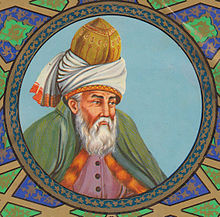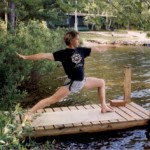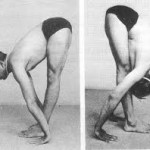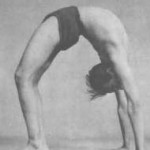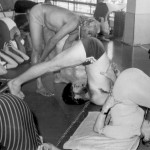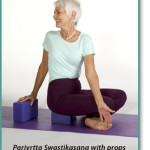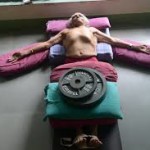Upaya is a lovely Sanskrit word referring to a sacred skill or practice, sacred in the sense of helping to move toward a deeper realization of the non-dual nature of Self, infinite stillness and effortless flow. When hatha yoga is an upaya, that is, not just physical exercise, or something that lays the groundwork for more ‘spiritual practices’, what eventually emerges is the realization that asana practice is profound vehicle for somatic sacred journeying. Here, the soul travels to realms of existence radically different from the every day world, expanding our sense of what is real, meeting teachers and guides on other planes, gathering clues about our own personal life adventure, and returning with gifts and lessons from these other realms to help foster the deep healing and awakening desperately needed on this planet, right now.
Patanjali offers a hint of some of the possibilities in sutra
I-40: paramaanu-parama-mahattvaanto’sya vashikaarah
Mastery (of one who has refined the mind) extends from the smallest particle to the totality of creation.
My introduction to somatic sacred journeying came in 1979 when I discovered Itzhak Bentov’s book ‘Stalking the Wild Pendulum’, an amazing exploration of science and consciousness. Bentov was a bio-medical engineer, a meditator, and, although I did 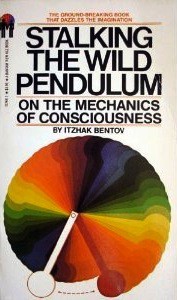 not realize it at the time, a serious shaman. Bentov, who died in a plane crash in 1979, had been journeying through non-local reality for years. He discovered that he could enter the hynogogic state between waking and sleep by lying in a bath tub filled with very hot water, and first used this to help solve engineering challenges. Then other surprises came to him.
not realize it at the time, a serious shaman. Bentov, who died in a plane crash in 1979, had been journeying through non-local reality for years. He discovered that he could enter the hynogogic state between waking and sleep by lying in a bath tub filled with very hot water, and first used this to help solve engineering challenges. Then other surprises came to him.
He left extensive notes which were edited and published by his wife Mirtala as “A Cosmic Book” in 1988. SWP was written ‘sort of seriously’, as Ben was trying to speak to the scientific community about meditative experiences. In “A Cosmic Book’,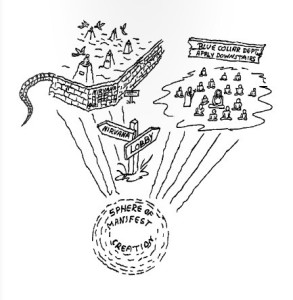 originally imagined as a comic book, he went ‘all in’, describing the adventures of a soul traveling through higher and higher octaves of creation, meeting devas and angels, all with an amazing lightness and sense of humor. As as we are in a kidney phase, I have to include this quote:
originally imagined as a comic book, he went ‘all in’, describing the adventures of a soul traveling through higher and higher octaves of creation, meeting devas and angels, all with an amazing lightness and sense of humor. As as we are in a kidney phase, I have to include this quote:
“Suppose we could project our consciousness into our kidney and strike up a conversation with single kidney cell. We would ask the kidney cell, “Would you tell me please, what do you do here?” The kidney cell, a very simple little fellow, will probably mumble something to the effect, “Look mister, I just work here. Why don’t you ask the 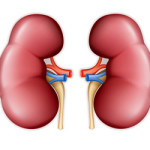 boss?” We go to the boss who is the kidney itself. It is the consciousness of all the kidney cells put together. The kidney right away rattles off all the good things the kidney does for the body. It tells you how it cleans the blood of harmful substances and how it regulates the components of the blood to achieve a balance among them. It is not ashamed to throw in a bit of propaganda, just in case, saying that without the kidney we wouldn’t last very long. We are very impressed with the performance, offer our thanks for the explanation and turn to the liver. The same thing happens: the single cell turns out to be relatively ignorant, while the composite consciousness of all the cells in the liver is an intelligent being and an expert in its field.”
boss?” We go to the boss who is the kidney itself. It is the consciousness of all the kidney cells put together. The kidney right away rattles off all the good things the kidney does for the body. It tells you how it cleans the blood of harmful substances and how it regulates the components of the blood to achieve a balance among them. It is not ashamed to throw in a bit of propaganda, just in case, saying that without the kidney we wouldn’t last very long. We are very impressed with the performance, offer our thanks for the explanation and turn to the liver. The same thing happens: the single cell turns out to be relatively ignorant, while the composite consciousness of all the cells in the liver is an intelligent being and an expert in its field.”
Many years later, today, my own inner vision is finally opening to Bentov’s insights, as my explorations in asana, Continuum and BMC, the Tao’st micro-cosmic orbit meditation, active dreaming and sacred geometry and more are converging in my practice and teachings. In order to help as many people as possible join me on these cosmic adventures, I am offering some simple upayas that can be very helpful to any and all interested in the art of somatic sacred journeying.
First: Cultivate ‘Mindfulness’ so you can fully inhabit the present moment. The past is always available, as are the many possible futures, but do not ‘get lost’ in them. There is a sense of spaciousness that arises when consciously mindful, and this spaciousness is our playground.
 Second: Become very familiar with what Bonnie calls ‘cellular breathing’. Simply put, it is feeling the radial expanding and condensing of our energy, like the action of the Hoberman sphere. Feel this as your whole body breathing, and then practice bringing this image/feeling anywhere in the body you wish to explore. This is the beginning of tracking energy flow in the body. Have this available, in the background, every moment, every day. Bring it to the front when needed.
Second: Become very familiar with what Bonnie calls ‘cellular breathing’. Simply put, it is feeling the radial expanding and condensing of our energy, like the action of the Hoberman sphere. Feel this as your whole body breathing, and then practice bringing this image/feeling anywhere in the body you wish to explore. This is the beginning of tracking energy flow in the body. Have this available, in the background, every moment, every day. Bring it to the front when needed.
Third: Discover and embody tubularity. From a single cell, we embryologically emerge into tubes, with a head and tail, top and bottom. This gives us a very specific orientation in the human upright posture, head to the heavens, tail to the earth. To the radial cellular breathing, we now can track energy flows up and down the main axis. This can structurally include the gut body, the spinal column and the spinal canal, and 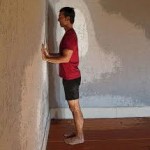 energetically, the thrusting vessel/chakra line. Also, our limbs are tubes, as are blood vessels and the interiors of the long bones. Tubes everywhere. ‘Climbing the Wall’ is a great way to explore the vertical axis.
energetically, the thrusting vessel/chakra line. Also, our limbs are tubes, as are blood vessels and the interiors of the long bones. Tubes everywhere. ‘Climbing the Wall’ is a great way to explore the vertical axis.
Metaphorically, the cosmic tubular being is Adhishesa, the coiled and resting cobra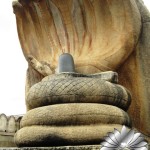 (yin) that can rise upward (yang). Also known as Ananta, the serpent of infinity is invoked by Patanjali in his second sutra on asana, II-47: pra-yatna shaithilyaananta sam-aa-pattibhyaam. With the release of effort and absorption in the limitless (posture is mastered).
(yin) that can rise upward (yang). Also known as Ananta, the serpent of infinity is invoked by Patanjali in his second sutra on asana, II-47: pra-yatna shaithilyaananta sam-aa-pattibhyaam. With the release of effort and absorption in the limitless (posture is mastered).
Fourth: Learn to track the quality energy flow in your body. Begin with clearly recognizing when you are over-working, felt as a contracting/tightening, and learn to back off. In a overly yang culture, overworking is often encouraged as a ‘good’ thing, and its all about the muscles, so this is not an easy habit to overcome. You will probably find that the same muscles overwork over and over, even in different poses.
Then feel when there is collapse or dullness. As you become more sensitive, you will find much of the dullness comes from the more yin organs. (Organs have both yin and  yang qualities, in varying degrees, but in general, muscles are yang and organs yin.) Both Infants and young children are very alive in their organs, and this gives their movements a lightness and effortlessness. Unfortunately, the effects of socialization gradually override their inner vibrancy and the organ energy gets lost.
yang qualities, in varying degrees, but in general, muscles are yang and organs yin.) Both Infants and young children are very alive in their organs, and this gives their movements a lightness and effortlessness. Unfortunately, the effects of socialization gradually override their inner vibrancy and the organ energy gets lost.
Fifth: Learn to work with ‘Container and Contents’: When there is neither overworking or dullness, you have vibrancy and you will begin to feel that you have an inside and an outside, a container, and contents. Both are dynamic and alive, flexible, and yet stable. Begin to ‘snorkel’ through your ‘contents’, the inner ocean. Swim in, around and through your organs, blood vessels and whatever other surprises you may encounter. This is ‘somatic meditation’. Like the fish and kelp, also be moved by the 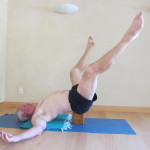 inner currents and tides. Be as receptive as possible. Take this feeling into your explorations on a block, floating, rather than doing. This is the ‘yin’ to the more dynamic, actively swimming ‘yang’.
inner currents and tides. Be as receptive as possible. Take this feeling into your explorations on a block, floating, rather than doing. This is the ‘yin’ to the more dynamic, actively swimming ‘yang’.
Sixth: recognize and play with the ‘fractal nature’ of life. A fractal is a pattern that repeats itself at all levels of existence. The sphere is the first and easiest to recognize. But container and contents is another. Within the contents of the outer container (skin maybe) there are more containers (organs), with more contents (cells, fluids), and the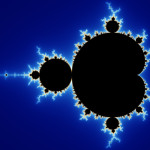 cells are containers that hold nucleii, mitochondria, etc.. And your home is a container that holds you, as is your community of friends, Mother Earth, The Solar System, and so on. Bentov was a real master of navigating this spectrum of being. (You have to read “A Cosmic Book”, again)
cells are containers that hold nucleii, mitochondria, etc.. And your home is a container that holds you, as is your community of friends, Mother Earth, The Solar System, and so on. Bentov was a real master of navigating this spectrum of being. (You have to read “A Cosmic Book”, again)
Seventh: Awaken to you dream life: Keep a journal and take notes, even if they are just fragments. Invite your dream world to come more into view. Journeying involves becoming more and more familiar with the nature of dream.
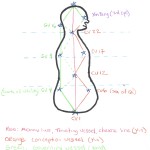 Eighth: Strengthen your imagination. This is the beginning of the micro-cosmic orbit meditation, where you imagine energy traveling in a circle and you imagine the energy traveling between various key points along the circuit. In time, there will be sensation in the energy field and tissues and you will be able to ‘feel’ the field, just as you can feel the energy between two magnets.
Eighth: Strengthen your imagination. This is the beginning of the micro-cosmic orbit meditation, where you imagine energy traveling in a circle and you imagine the energy traveling between various key points along the circuit. In time, there will be sensation in the energy field and tissues and you will be able to ‘feel’ the field, just as you can feel the energy between two magnets.
Also, create a sacred garden or any sort of sacred space, in the imaginal realm, and work with it. Active practice engaging this important ‘vrtti’, invoking all your senses. What can you hear? What do you want to smell and see? Add to it, modify it. Notice when it begins to take on a life of its own. Visit it often.
Another aspect of imaginal practice is shape shifting. The asana tradition includes imitating the postures of living beings, from birds and dogs, to locusts, turtles and frogs, to trees 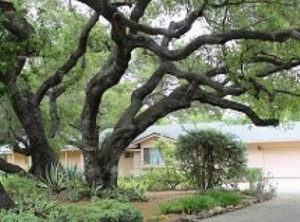 and lotuses (lotii ?). In the imaginal realm, rather than changing the shape of the structural body, allow the spirit of the being to infuse your subtle energy bodies. You can do this in any pose. I am particularly fond of bird and dolphin energy, as they are becoming my guides. It is always good to travel with guides and a support team. And you have to learn to do trees, because they are very powerful doorways to both the lower and upper realms.
and lotuses (lotii ?). In the imaginal realm, rather than changing the shape of the structural body, allow the spirit of the being to infuse your subtle energy bodies. You can do this in any pose. I am particularly fond of bird and dolphin energy, as they are becoming my guides. It is always good to travel with guides and a support team. And you have to learn to do trees, because they are very powerful doorways to both the lower and upper realms.
This is a discipline that requires practice. Visualization is used in the Tibetan tantric tradition to ultimately discover the non-dual reality that there is no other, no outside, and all forms are of the imaginal realm, impermanent, transient, but also teeming with divine presence. We all inhabit a cosmic playground. The trick is to realize this and then do what you can to make are tiny corner of the cosmos a safe, loving and creative space for all to awaken and enjoy.




